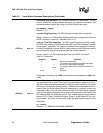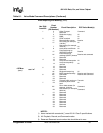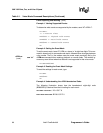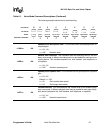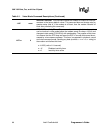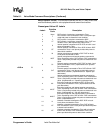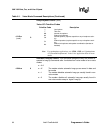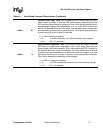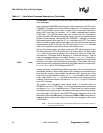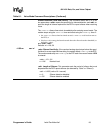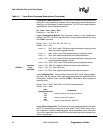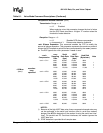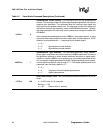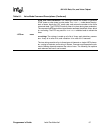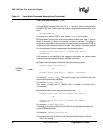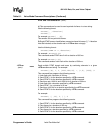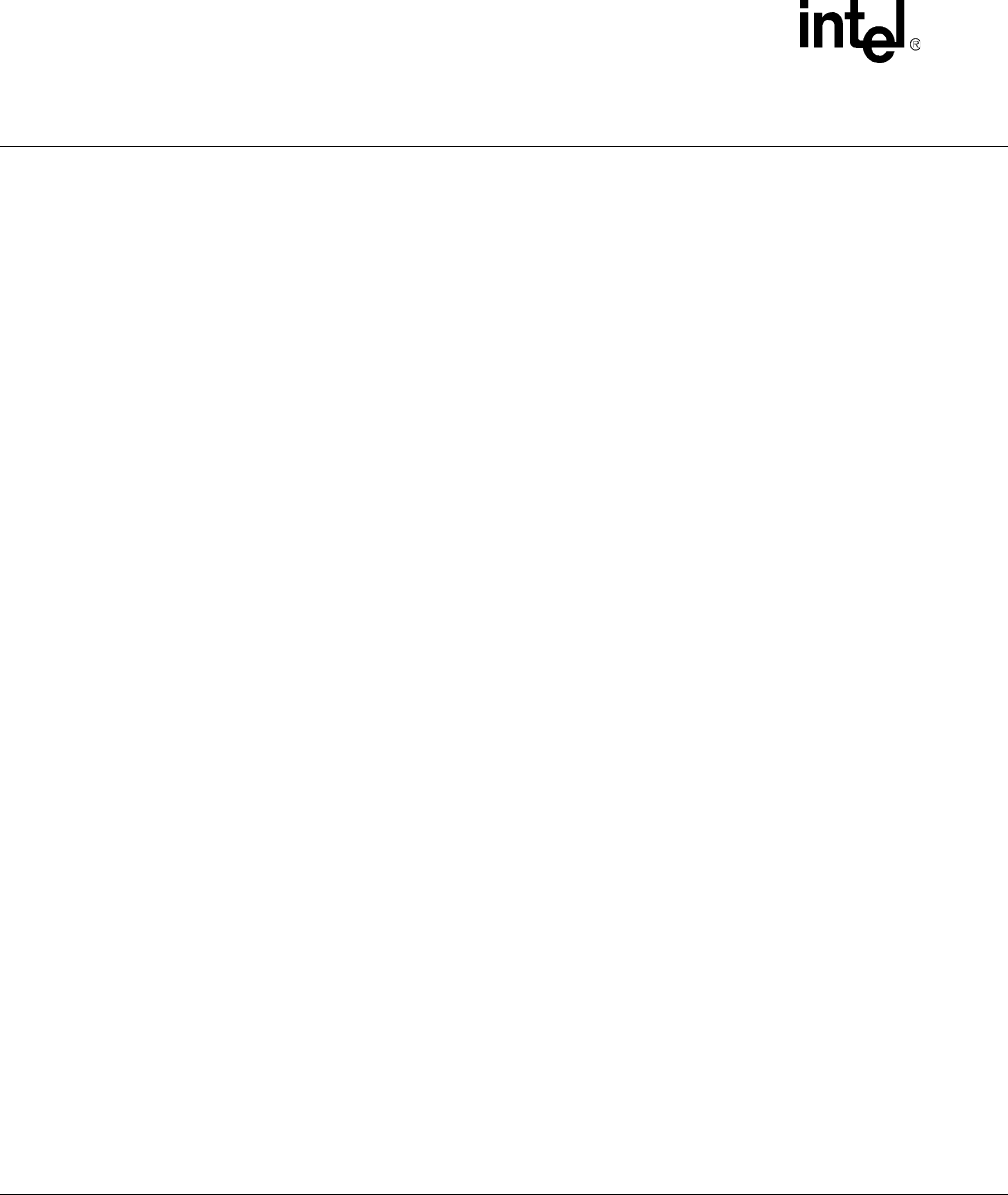
56K V.92 Data, Fax, and Voice Chipset
92 Intel Confidential Programmer’s Guide
+VRX none
Record Mode: This command causes the modem to enter record mode to record
voice messages.
Upon receiving the AT+VRX command, the modem responds to the DTE with a
‘CONNECT’ message at the current DTE-to-modem rate. It is important that the
UART DTE-to-modem rate be equal or higher to the compression-scheme-re-
quired UART data rate (for example, CL1 at 4800 samples/second requires
57,600 bps). If the DTE-to-modem data rate is lower than the compression-
scheme-required UART data rate, then data may be lost or may be garbled during
playback of the message. After sending the “CONNECT” message, the modem
then sends digitized voice data that is <DLE>-shielded to the DTE. The modem
buffers the data to ensure steady voice delivery even though the voice data may
be transferred to the DTE in bursts. The DTE may use the <DLE><NUL> shielded
code as a no-operation command to refresh the inactivity timer.
During voice receive mode, the modem informs the DTE about pertinent events
that may prompt the DTE to terminate the voice receive state. The DCE sends
<DLE> codes for detection of signals such as busy tone, dial tone, DTMF tone,
and codes for “Presumed End of Message” or “Presumed Hang-up.” Record
mode is terminated whenever the modem issues a <DLE><ESC> command or
provides a DTE/DCE inactivity timer time-out. Upon detecting the terminating
character, the modem stops sampling the analog data. The modem then termi-
nates record mode by sending the remaining voice data stored in its internal buff-
er, <DLE><ETX>, and an ‘OK’ message to the DTE.
In some situations, the application software may want to abort record mode and
immediately perform a new function without first reading all the recorded voice
data from the modem’s internal buffer (for example, after detecting fax calling
tone). This is accomplished by sending <DLE><!> to the modem while in record
mode. Upon seeing <DLE><!>, the modem terminates record mode, clears the
modem’s internal record buffer, and issues a <DLE><ETX> to the DTE followed
by an ‘OK’ message.
The modem may immediately abort record mode if it receives either an
AT+VIT=n time-out or a DTR toggle. If +VIT≠0 and the modem has not received
any data or a <DLE><NUL> code before the +VIT timer times out, then the modem
immediately aborts record mode. The modem then hangs up the line and chang-
es to data mode (+FCLASS=0). If the UART DTR signal is toggled on-off-on, then
the modem follows the &Dn setting. If configured for &D2 or &D3, the modem im-
mediately aborts record mode, hangs up the line, and changes to data mode
(+FCLASS=0).
Note: The voice sampling rate and sampling mode must be the same values as
used during record mode.
Table 6-1. Voice Mode Command Descriptions (Continued)



